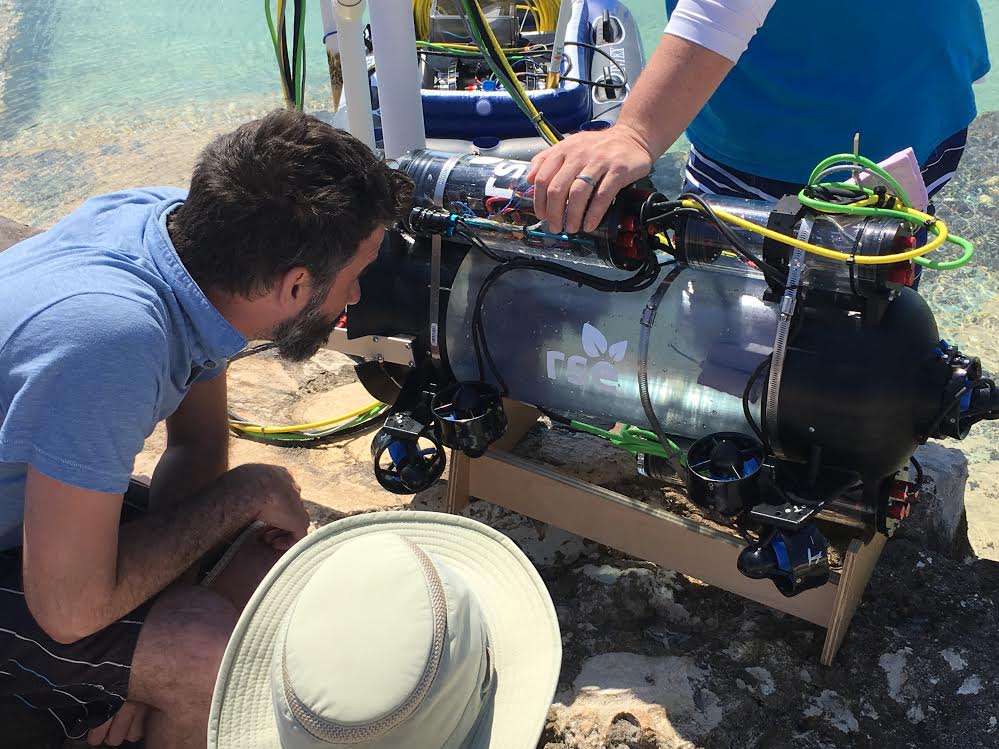The world of robotics is not just about automation and convenience anymore; it has found a new purpose in environmental conservation. A remarkable initiative spearheaded by iRobot’s CEO, Colin Angle, and Erika Angle, founder of Science from Scientists, has birthed a non-profit organization aimed at solving the lionfish dilemma. This invasive species threatens marine ecosystems, and the solution may lie in the depths of innovation.
Meet the Guardian LF1: A Robotic Solution
The Guardian LF1 is not your typical underwater drone. It is a specialized Remotely Operated Vehicle (ROV) designed to target and eliminate the invasive lionfish, notorious for wreaking havoc on ocean habitats. In early demos, viewers are captivated by the unique design of this robotic marvel—a translucent cylinder gliding through shallow waters, complete with a pair of fans and extending spatula-like arms. Its mission is as clear as its construction: to stealthily approach and vacuum up the lionfish that have invaded Atlantic waters.
The Lionfish Invasion: A Growing Concern
- Origins: Native to the Indo-Pacific, lionfish were inadvertently introduced to the Atlantic Ocean around 25 years ago.
- Predatorial Dominance: With no natural predators in their new environment, lionfish proliferate aggressively.
- Impact on Ecosystems: Their voracious appetite for smaller reef fish disrupts the ecological balance, which can have dire consequences for marine life.
- Hunting Difficulties: Traditional fishing methods like spearfishing are often ineffective due to the lionfish’s preference for hiding in caves and deeper waters.
A Tailored Approach to Conservation
What makes the Guardian LF1 stand out is its ability to capitalize on the lionfish’s own behavior. Rather than chasing or trapping, the robot utilizes its quiet approach to surprise the fish. With its front panel stunning the lionfish, it swiftly vacuums them onboard. Each ROV can accumulate up to ten lionfish at a time, providing a streamlined solution to an otherwise daunting challenge.
Support and Future Endeavors
Robots in Service of the Environment (RSE) is already making waves, receiving funding from influential bodies such as the Schmidt Ocean Institute. This support helps ensure that their groundbreaking work will continue. Moreover, the organization is set to extend its reach with a Kickstarter campaign designed to fund future environmental robots, marking the beginning of what could be an expansive array of interventions aimed at addressing various ecological issues.
The Outlook: Fishing for Solutions
Beyond tackling the lionfish problem, this initiative could inspire a new wave of robotics aimed at environmental stewardship. The successful deployment of ROVs for fish removal not only showcases the potential for technology in conservation but also encourages the responsible consumption of lionfish, which have been found to be quite tasty, presenting them as both a culinary delight and an ecological remedy.
Conclusion
This innovative spirit exemplified by the Guardian LF1 serves as a reminder of the positive impacts technology can have beyond mere convenience. As businesses and individuals turn towards environmental solutions, robotics offers a fresh lens through which we can view and address pressing ecological challenges. By deploying unique, targeted technology like the Guardian LF1, we can hope for healthier ocean ecosystems and a more sustainable future.
For more insights, updates, or to collaborate on AI development projects, stay connected with fxis.ai.
At fxis.ai, we believe that such advancements are crucial for the future of AI, as they enable more comprehensive and effective solutions. Our team is continually exploring new methodologies to push the envelope in artificial intelligence, ensuring that our clients benefit from the latest technological innovations.

